Paris Climate Agreement: Everything You Need to Know
The Paris Agreement charted a new course in the effort to combat global climate change, requiring countries to make commitments and progressively strengthen them. Here’s what the accord seeks to achieve, and why our future may depend on its success.

Visitors enter the U.S. “We Are Still In” pavilion at the COP 23 United Nations Climate Change Conference on November 11, 2017 in Bonn, Germany.
Lukas Schulze/Getty Images
“A world that is safer and more secure, more prosperous, and more free.” In December 2015, that was the world then-president Barack Obama envisioned we would leave today’s children when he announced that the United States, along with nearly 200 other countries, had committed to the Paris Climate Agreement, an ambitious global action plan to fight climate change.
But less than two years later, then-president Donald Trump put that future in jeopardy by announcing his plan to withdraw the United States from the accord—a step that became official on November 4, 2020—as part of a larger effort to dismantle decades of U.S. environmental policy. Fortunately, American voters also got their say in November 2020, ousting Trump and sending Joe Biden and Kamala Harris to the White House.
Following President Biden’s day one executive order, the United States officially rejoined the landmark Paris Agreement on February 19, 2021, positioning the country to once again be part of the global climate solution. Meanwhile, city, state, business, and civic leaders across the country and around the world have been ramping up efforts to drive the clean energy advances needed to meet the goals of the agreement and put the brakes on dangerous climate change.
Here’s a look at what the Paris Agreement does, how it works, and why it’s so critical to our future.
What is the Paris Agreement?
The Paris Agreement is a landmark international accord that was adopted by nearly every nation in 2015 to address climate change and its negative impacts. The agreement aims to substantially reduce global greenhouse gas emissions in an effort to limit the global temperature increase in this century to 2 degrees Celsius above preindustrial levels, while pursuing the means to limit the increase to 1.5 degrees. The agreement includes commitments from all major emitting countries to cut their climate pollution and to strengthen those commitments over time. The pact provides a pathway for developed nations to assist developing nations in their climate mitigation and adaptation efforts, and it creates a framework for the transparent monitoring, reporting, and ratcheting up of countries’ individual and collective climate goals.
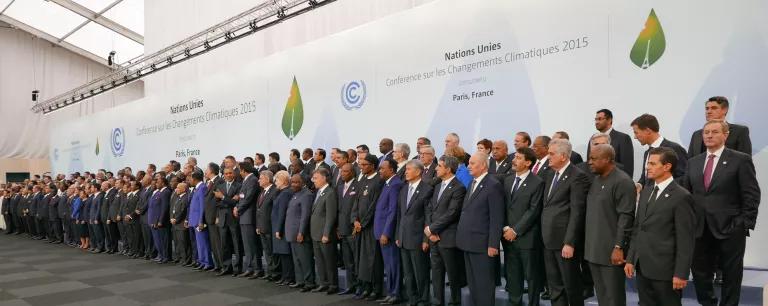
International leaders stand together at the gathering of COP21 in 2015.
Presidencia de la Republica Mexicana via Flickr
History of the Paris Agreement
Hammered out over two weeks in Paris during the United Nations Framework Convention on Climate Change’s (UNFCCC) 21st Conference of the Parties (COP 21) and adopted on December 12, 2015, the Paris Agreement marked a historic turning point for global climate action, as world leaders came to a consensus on an accord comprised of commitments by 195 nations to combat climate change and adapt to its impacts.
President Obama was able to formally enter the United States into the agreement under international law through executive authority, since it imposed no new legal obligations on the country. The United States has a number of tools already on the books, under laws already passed by Congress, to cut carbon pollution. The country formally joined the agreement in September 2016 after submitting its proposal for participation. The Paris Agreement could not take effect until at least 55 nations representing at least 55 percent of global emissions had formally joined. This happened on October 5, 2016, and the agreement went into force 30 days later on November 4, 2016.
How many countries are in the Paris Agreement?
Since 2015, 197 countries—nearly every nation on earth, with the last signatory being war-torn Syria—have endorsed the Paris Agreement. Of those, 190 have solidified their support with formal approval. The major emitting countries that have yet to formally join the agreement are Iran, Turkey, and Iraq.

President Donald Trump announces that the U.S. will withdraw from the Paris Agreement in the White House Rose Garden.
Susan Walsh/Associated Press
The Paris Agreement and Trump
Following through on a campaign promise, Trump—a climate denier who has claimed climate change is a “hoax”—announced in June 2017 his intent to withdraw the United States from the Paris Agreement and officially pulled the nation out on November 4, 2020—the earliest possible date under the agreement and a day after the presidential election. Thankfully, even a formal withdrawal can be reversed since a future president can rejoin.
Despite Trump’s announcement in 2017, U.S. envoys continued to participate—as mandated—in U.N. climate negotiations to solidify details of the agreement. Meanwhile, thousands of leaders nationwide stepped in to fill the void created by the lack of federal climate leadership, reflecting the will of the vast majority of Americans who support the Paris Agreement. Among city and state officials, business leaders, universities, and private citizens, there has been a groundswell of participation in initiatives such as America’s Pledge, the United States Climate Alliance, We Are Still In, and the American Cities Climate Challenge. The complementary and sometimes overlapping movements aim to deepen and accelerate efforts to tackle climate change at the local, regional, and national levels.
The Paris Agreement and Biden
On his first day in office, President Biden sent a letter to the United Nations, formally signaling that the United States would rejoin the Paris Agreement. Thirty days later (as is required), on February 19, 2021, the nation was re-entered.
This new era of U.S. climate leadership represents our last, best chance to course-correct in the global race to tackle climate change. In fact, the Biden’s climate plan is the most comprehensive ever undertaken by a U.S. president—and he intends to rally international leaders to cut emissions even more aggressively than under the goals of the Paris Agreement. As Biden and Vice President Harris fight to pull the nation out of the grip of the COVID-19 pandemic, they can do so in ways that support climate justice and a clean energy economy.
Paris Agreement summary
The 32-page document establishes a framework for global climate action, including the mitigation of and adaptation to climate change, the transparent reporting and strengthening of climate goals, and support for developing nations. Here’s what it aims to do:
Limit global temperature rise by reducing greenhouse gas emissions.
In an effort to “significantly reduce the risks and impacts of climate change,” the accord calls for limiting the global average temperature rise in this century to well below 2 degrees Celsius, while pursuing efforts to limit the temperature rise to 1.5 degrees. It also asks countries to work to achieve a leveling off of global greenhouse gas emissions as soon as possible and to become greenhouse gas emissions neutral in the second half of this century. In 2018, the IPCC’s Special Report: Global Warming at 1.5 Degrees Celsius concluded the difference between 1.5 and 2 degrees Celsuis could mean substantially more poverty, extreme heat, sea level rise, habitat loss, and drought.
To achieve the Paris Agreement’s original objectives, 186 countries—responsible for more than 90 percent of global emissions—submitted carbon reduction targets, known as “intended nationally determined contributions” (INDCs), prior to the Paris conference. These targets outlined each country’s commitments for curbing emissions (including through the preservation of carbon sinks) through 2025 or 2030, including economy-wide carbon-cutting goals.
INDCs turn into NDCs—nationally determined contributions—once a country formally joins the agreement. There are no specific requirements about how or how much countries should cut emissions, but there have been political expectations about the type and stringency of targets by various countries based on the latest science. As a result, national plans vary greatly in scope and ambition, largely reflecting each country’s capabilities, its level of development, and its contribution to emissions over time. China, for example, committed to leveling off its carbon emissions no later than 2030. India set its sights on cutting emissions intensity by 33 to 35 percent below 2005 levels and generating 40 percent of its electricity from non–fossil fuel sources by 2030.
The United States—the world’s largest historical emitter and the second-biggest current emitter after China—had committed to cutting overall greenhouse gas emissions by 26 to 28 percent below 2005 levels by 2025. U.S. initiatives to achieve the target include the Clean Power Plan (a state-by-state program to cut carbon pollution from the power sector) and the tightening of automotive fuel economy standards to reduce transportation emissions—both policies the Trump administration fought hard to roll back and which the Biden/Harris administration has committed to strengthening.
Provide a framework for transparency, accountability, and the achievement of more ambitious targets.
The Paris Agreement includes a series of mandatory measures for the monitoring, verification, and public reporting of progress toward a country’s emissions-reduction targets. The enhanced transparency rules apply common frameworks for all countries, with accommodations and support provided for nations that currently lack the capacity to strengthen their systems.
Among other requirements, countries must report their greenhouse gas inventories and progress relative to their targets, allowing outside experts to evaluate their success. Countries are also expected to revisit their pledges and put forward progressively stronger targets every five years, with the goal of further driving down emissions. Nations must participate in a “global stocktake” to measure collective efforts toward meeting the Paris Agreement’s long-term goals as well. Meanwhile, developed countries also have to estimate how much financial assistance they’ll allocate to developing nations to help them reduce emissions and adapt to the impacts of climate change.
These transparency and accountability provisions are similar to those in the frameworks of other international agreements. While the system doesn’t include financial penalties, the requirements are aimed at making the progress of individual nations easy to track and fostering a sense of global peer pressure, discouraging any dragging of feet among countries that may consider doing so.
Mobilize support for climate change mitigation and adaptation in developing nations.
Recognizing that many developing countries and small island nations that have contributed the least to climate change could suffer the most from its consequences, the Paris Agreement includes a plan for developed countries—and others “in a position to do so”—to continue to provide financial resources to help developing countries mitigate and increase resilience to climate change. For instance, India’s pledge includes the need to eradicate poverty in parallel with decreasing emissions and increasing renewable energy, such as addressing energy poverty and access in remote villages that rely on diesel generators. With technological and financial help from wealthier countries, important equity-focused goals such as these can be within reach. The Paris Agreement builds on the financial commitments of the 2009 Copenhagen Accord, which aimed to scale up public and private climate finance for developing nations to $100 billion a year by 2020. The Copenhagen pact also created the Green Climate Fund to help mobilize transformational private finance using targeted public dollars. The Paris Agreement established the expectation that the world would set a higher annual goal by 2025 to build on the $100 billion target for 2020 and would put mechanisms in place to achieve that scaling up. Unfortunately, collective contributions continue to fall short, reaching approximately $79 billion in 2019.
While developed nations are not legally bound to contribute a specific amount to the mitigation and adaptation efforts of developing countries, they are encouraged to provide financial support and are required to report on the financing they supply or will mobilize.
Why is the Paris Agreement important?
Rarely is there consensus among nearly all nations on a single topic. But with the Paris Agreement, leaders from around the world collectively agreed that climate change is driven by human behavior, that it’s a threat to the environment and all of humanity, and that global action is needed to stop it. It also created a clear framework for all countries to make emissions reduction commitments and strengthen those actions over time. Here are some key reasons why the agreement is so important:
Human-generated emissions cause global warming.
Carbon dioxide, nitrous oxide, and methane are gases that collect in the atmosphere and prevent heat from radiating from earth’s surface into space, creating what’s known as the greenhouse effect. According to the Intergovernmental Panel on Climate Change (IPCC), the leading international scientific body studying the subject, the concentration of these heat-trapping gases has increased substantially since preindustrial times to levels not seen in at least 800,000 years. Carbon dioxide (the chief contributor to climate change) is up by 40 percent, nitrous oxide by 20 percent, and methane by a whopping 150 percent since 1750—mainly from the burning of dirty fossil fuels. The IPCC says it’s “extremely likely” that these emissions are mostly to blame for the rise in global temperatures since the 1950s. Meanwhile, deforestation and forest degradation have contributed significantly to global carbon emissions as well.
Global warming threatens climate systems.
Hotter temperatures—both on land and at sea—alter global weather patterns and change how and where precipitation falls. Those shifting patterns exacerbate dangerous and deadly drought, heat waves, floods, wildfires, and storms, including hurricanes. They also melt ice caps, glaciers, and layers of permafrost, which can lead to rising sea levels and coastal erosion. Warmer temperatures impact whole ecosystems as well, throwing migration patterns and life cycles out of whack. For example, an early spring can induce trees and plants to flower before bees and other pollinators have emerged. While global warming may equate to longer growing seasons and higher food production in some regions, areas already coping with water scarcity are expected to become drier, creating the potential for drought, failed crops, or wildfires.
Climate change endangers human health.
As climate change fuels temperature increases and extreme weather events, it jeopardizes our air, water, and food; spreads disease; and imperils our homes and safety. We are confronting a growing public health crisis.
- Extreme heat contributes directly to cardiovascular deaths and respiratory disease. In the Indian city of Ahmedabad, for example, more than 1,300 excess deaths were recorded during a heat wave in May 2010. High temperatures also reduce air quality by creating more smog, pollen, and other air-borne allergens—all of which can trigger asthma, which afflicts 235 million people around the world. Extreme heat can also exacerbate drought, leading to malnutrition and famine.
- Changing weather patterns can impact sources of fresh water and food. While drought creates water scarcity, floods can contaminate drinking water supplies, increasing the risk of water-borne diseases and illnesses spread by disease-carrying insects, such as mosquitoes. Unpredictable weather patterns and water supplies can also wreak havoc on agriculture and food supplies, particularly in regions of the world that are less climate-resilient and where staple food crops are critical for survival.
- Extreme weather and rising seas can destroy homes, public infrastructure, and entire ways of life—forcing people to move or migrate, displacing whole populations, and increasing the threat of civil unrest. Indeed, the World Economic Forum ranks extreme weather, natural disasters, and our collective failure to mitigate and adapt to climate change as among the greatest threats facing humanity in the coming decade. We’re already experiencing some of those dangers. In the United States, six recent natural disasters equated to tens of thousands of hospitalizations and ER and doctor visits, as well as more than 1,600 premature deaths. In 2017 alone, 16 extreme weather–related disasters cost the country a record-breaking $306 billion in damages.
The countries hardest hit by the impact of climate change will be low-lying nations uniquely vulnerable to sea level rise and developing countries that lack the resources to adapt to temperature and precipitation changes. But wealthy nations such as the United States are increasingly vulnerable as well. Indeed, many millions of Americans—particularly children, the elderly, and the impoverished—are already suffering climate change’s wrath. Many frontline communities are majority people of color. Around the world, those most impacted by climate change are those who contribute least to emissions.
Global warming can be mitigated only with global action.
The IPCC notes that climate change will be limited only by “substantial and sustained reductions in greenhouse gas emissions.” While one can debate the merits of using a single global temperature threshold to represent dangerous climate change, the general scientific view today—represented in the IPCC’s Special Report: Global Warming at 1.5 Degrees Celsius—is that any rise in global temperatures of more than 1.5 degrees Celsius would be an unacceptably high risk, potentially resulting in major extinctions, more severe droughts and hurricanes, a watery Arctic, and an increased toll on human health and well-being. Furthermore, as the IPCC has noted, while it remains uncertain precisely how much global warming will “trigger abrupt and irreversible changes” in the earth’s systems, the risk of crossing the threshold only increases as temperatures rise.
To avoid major changes to life as we know it, global action must be taken. At the Paris climate conference, all countries committed to a target of keeping the temperature change to well below 2 degrees and to make efforts to prevent a change greater than 1.5 degrees. Unfortunately, the emissions gap—the emissions level with existing commitments compared to a safer trajectory—is still dangerously large as of 2020. Every tenth of a degree matters, and we cannot prevent this unless we act immediately to cut emissions deeply.
What are the Paris Agreement's costs?
There’s a lot of misinformation out there about the Paris Agreement, including the idea that it will hurt the U.S. economy. That was among a number of unfounded claims former president Trump repeated, arguing that the accord would cost the U.S. economy $3 trillion by 2040 and $2.7 million jobs by 2025, making us less competitive against China and India. But as fact checkers noted, these statistics originated from a debunked March 2017 study that exaggerated the future costs of emissions reductions, underestimated advances in energy efficiency and clean energy technologies, and outright ignored the huge health and economic costs of climate change itself. Climate change is already costing public health. Research from NRDC scientists shows how inaction on climate change is responsible for many billions in health costs each year in just the United States—as communities around the world experience greater displacement, illness, famine, water shortages, civil strife, and death.
Research makes clear that the cost of climate inaction far outweighs the cost of reducing carbon pollution. One 2018 study titled Large Potential Reduction in Economic Damages Under U.N. Mitigation Targets, which was published in the journal Nature, suggests that if the United States failed to meet its Paris climate goals, it could cost the economy as much as $6 trillion in the coming decades. A worldwide failure to meet the NDCs currently laid out in the agreement could reduce global GDP more than 25 percent by century’s end. Meanwhile, another study estimates that meeting—or even exceeding—the Paris goals via infrastructure investments in both clean energy and energy efficiency could have major global rewards—to the tune of some $19 trillion.
In terms of employment, the clean energy sector employed more than 3 million Americans before the start of the COVID-19 pandemic—about 14 times the number of coal, gas, oil, and other fossil fuel industry workers—and has the potential to employ many more with further investments in energy efficiency, renewable energy, and electric grid modernization to replace the aging coal-powered infrastructure. Meanwhile, coal jobs aren’t so much being transferred “out of America” as they are falling victim to market forces as renewable and natural gas prices decline. But supporting policies that promote an equitable transition—with community-led decision-making, a focus on equity, and retraining support—is an important means to helping communities leave the dirty energy economy behind them.
Finally, rather than giving China and India a pass to pollute, as Trump claimed, the pact represents the first time those two major developing economies have agreed to concrete and time-bound climate commitments. Both countries, which are already poised to lead the world in renewable energy, have made significant progress to meet their Paris goals.

President George H. W. Bush signs the Earth Pledge at the 1992 Earth Summit in Rio De Janeiro.
M. Frustino/Associated Press
International agreements on climate change
The Paris Agreement is the culmination of decades of international efforts to combat climate change. Here is a brief history.
United Nations Framework Convention on Climate Change
In 1992, President George H.W. Bush joined 107 other heads of state at the Rio Earth Summit in Brazil to adopt a series of environmental agreements, including the UNFCCC framework that remains in effect today. The international treaty aimed to prevent dangerous human interference with earth’s climate systems over the long term. The pact set no limits on greenhouse gas emissions for individual countries and contained no enforcement mechanisms, but instead established a framework for international negotiations of future agreements, or protocols, to set binding emissions targets. Participating countries meet annually at a Conference of the Parties (COP) to assess their progress and continue talks on how to best tackle climate change.
Kyoto Protocol
The Kyoto Protocol, a landmark environmental treaty that was adopted in 1997 at the COP 3 in Japan, represents the first time nations agreed to legally mandated, country-specific emissions reduction targets. The protocol, which didn’t go into effect until 2005, set binding emissions reduction targets for developed countries only, on the premise that they were responsible for most of the earth’s high levels of greenhouse gas emissions. The United States initially signed the agreement but never ratified it; President George W. Bush argued that the deal would hurt the U.S. economy since developing nations such as China and India were not included. Without the participation of those three countries, the treaty’s effectiveness proved limited, with its targets covering only a small fraction of total global emissions.
The Kyoto Protocol’s initial commitment period extended through 2012. That year, at the COP 18 in Doha, Qatar, delegates agreed to extend the accord until 2020 (without some developed nations, which had dropped out). They also reaffirmed their 2011 pledge from the COP 17 in Durban, South Africa, to create a new, comprehensive climate treaty by 2015 that would require all big emitters not included in the Kyoto Protocol—such as China, India, and the United States—to reduce their greenhouse gas emissions. The new treaty—what would become the Paris Agreement—was to fully replace the Kyoto Protocol by 2020. However, the Paris accord went into effect earlier than expected, in November 2016.
Kyoto Protocol vs. the Paris Agreement
While the Kyoto Protocol and Paris Agreement both set out to address climate change, there are some key differences between them.
Unlike the Kyoto Protocol, which established top-down legally binding emissions reduction targets (as well as penalties for noncompliance) for developed nations only, the Paris Agreement requires that all countries—rich, poor, developed, and developing—do their part and slash greenhouse gas emissions. To that end, greater flexibility and national ownership is built into the Paris Agreement: No language is included about the commitments countries should make; nations can set their own emissions targets (NDCs) consistent with their level of development and technological advancement.
While the Paris Agreement doesn’t have harsh penalties for countries not meeting their targets, it does have a robust system of monitoring, reporting, and reassessing individual and collective country targets over time in order to move the world closer to the broader objectives of the deal. And the agreement sets forth a requirement for countries to announce their next round of targets every five years—unlike the Kyoto Protocol, which aimed for that objective but didn’t include a specific requirement to achieve it.
Beyond Paris
While the Paris Agreement ultimately aims to cap global temperature rise at 1.5 degrees Celsius in this century, many studies evaluating the national pledges countries made in Paris show that the cumulative effect of those emissions reductions won’t be large enough to keep temperatures under that limit. Indeed, the targets that countries laid out are expected to limit future temperature rise to approximately 2.9 degrees Celsius. Meanwhile, despite temporary emissions drops related to changes in production and travel associated with the COVID-19 pandemic, current evaluations of how countries are performing in the context of their Paris climate goals indicate some nations are already falling short of their commitments.
However, it’s important to remember the Paris Agreement isn’t static. Instead, it’s designed to boost countries’ national efforts over time—meaning that current commitments represent the floor, not the ceiling, of climate change ambition. The heavy lifting—reining in emissions even further by 2030 and 2050—still needs to be done, and the accord provides the tools and pressure to make that happen.
As the Paris Agreement matures, nations including the United States must firmly commit to phasing out fossil fuel investment (locally and abroad) and investing in nature-based solutions. Often, the communities who contribute least to global emissions are the ones already showing wealthier nations the way, committing to rapid emissions reductions, renewable energy expansion, protecting their forests, and putting economies on low-carbon pathways. Nations must uplift these communities as well as those who are faced with the brunt of climate impacts. This includes formally protecting Indigenous knowledge and rights, which are critical to fighting the climate crisis. Indigenous peoples—comprising 5 percent of the global population—protect 80 percent of the planet’s biodiversity. Even without stronger recognition within the Paris Agreement, Indigenous and frontline communities are building a global movement and successfully fighting back against extractive, climate-damaging industries, including fossil fuel pipelines, logging, dams, and mining.
Reflecting the collective belief of nearly every nation on earth that climate change is humanity’s race to win, the Paris Agreement exposes America’s climate skeptics as global outliers. In fact, the mobilization of support for climate action across the country and around the world provides hope that the Paris Agreement marked a turning point in the global race against climate change. We can all contribute to the cause by seeking opportunities to slash global warming contributions—at the individual, local, and national levels—but we understand better than ever that individual action is not enough. There is a lot of damage from the Trump administration that President Biden will need to undo—and quickly. But the effort will be well worth the reward of a safer, cleaner world for future generations.
The next Conference of the Parties is currently scheduled for November 2021 in Glasgow. The aims of COP 26 will be to assess the progress made under the Paris Agreement and to encourage countries to enhance their original NDCs into greater alignment with current climate science. While COP 26 was postponed due to COVID-19, the delay gives countries time to develop more ambitious targets and accelerate low-carbon actions to ensure a green and resilient recovery from COVID-19.
This story was originally published on December 12, 2018 and has been updated with new information and links.
This NRDC.org story is available for online republication by news media outlets or nonprofits under these conditions: The writer(s) must be credited with a byline; you must note prominently that the story was originally published by NRDC.org and link to the original; the story cannot be edited (beyond simple things such as grammar); you can’t resell the story in any form or grant republishing rights to other outlets; you can’t republish our material wholesale or automatically—you need to select stories individually; you can’t republish the photos or graphics on our site without specific permission; you should drop us a note to let us know when you’ve used one of our stories.
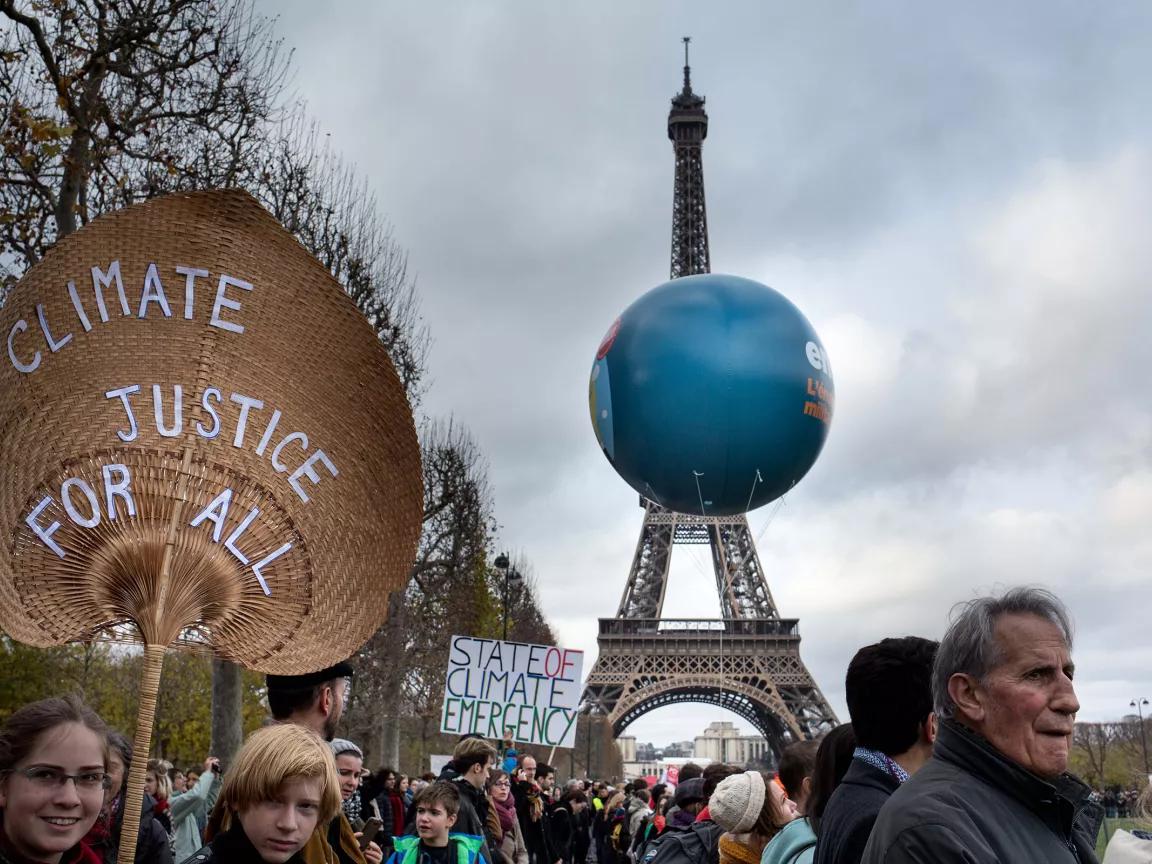
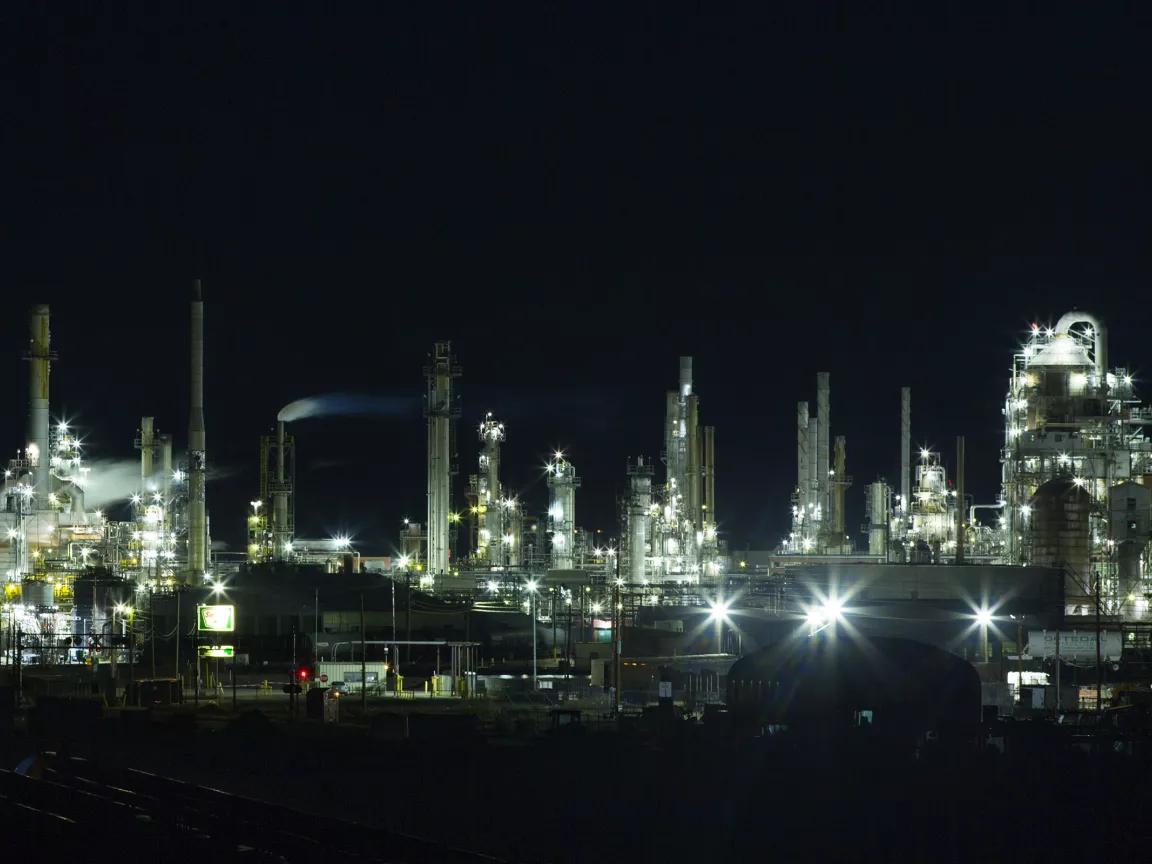
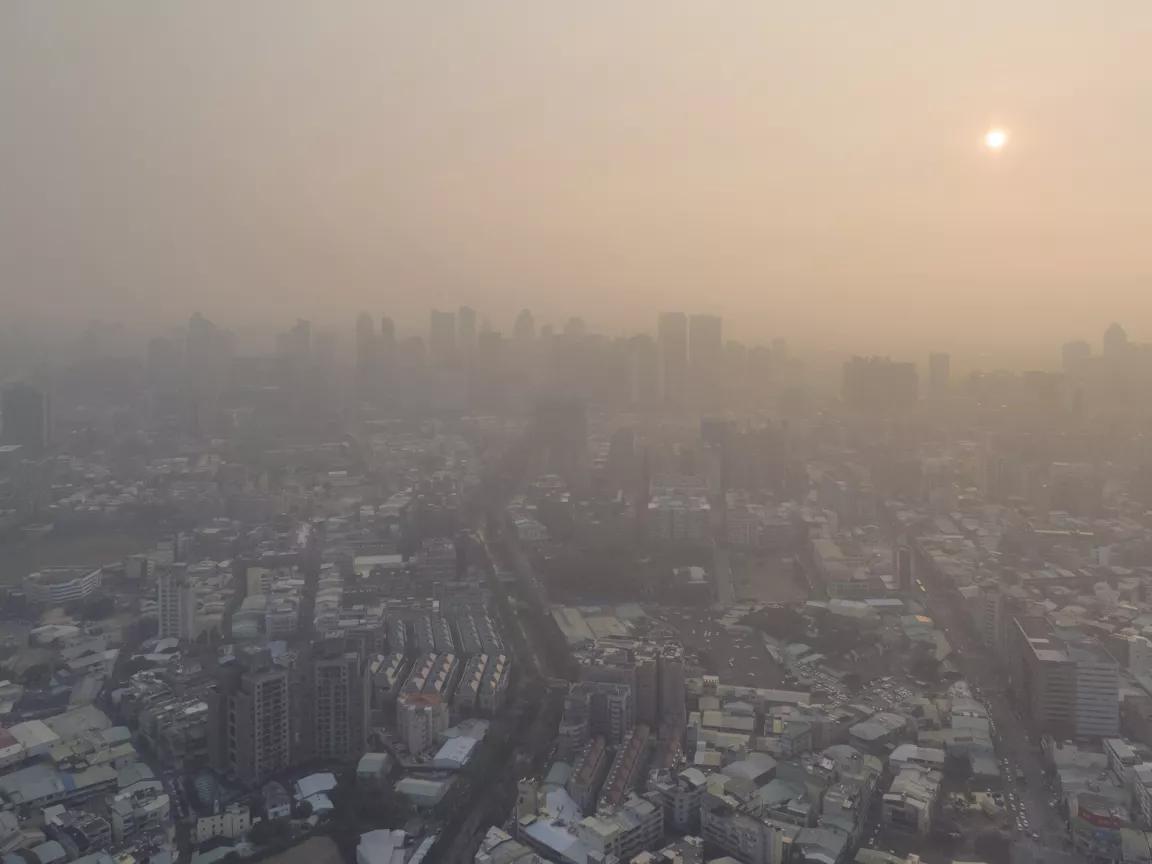


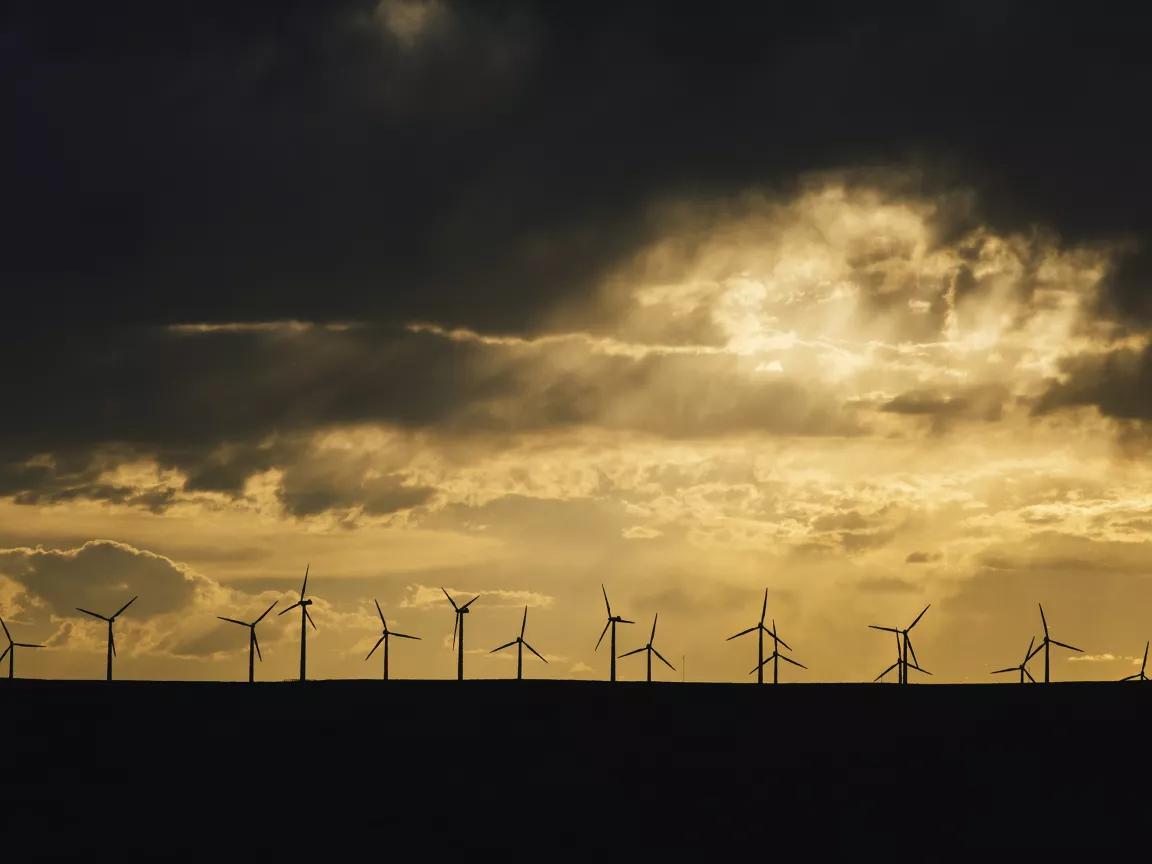

Liquefied Natural Gas 101
1.5 Degrees of Global Warming—Are We There Yet?
When Customers and Investors Demand Corporate Sustainability
Liquefied Natural Gas 101
1.5 Degrees of Global Warming—Are We There Yet?
When Customers and Investors Demand Corporate Sustainability
Liquefied Natural Gas 101
1.5 Degrees of Global Warming—Are We There Yet?
When Customers and Investors Demand Corporate Sustainability
Liquefied Natural Gas 101
1.5 Degrees of Global Warming—Are We There Yet?